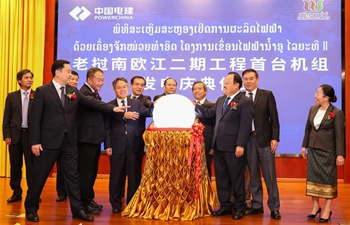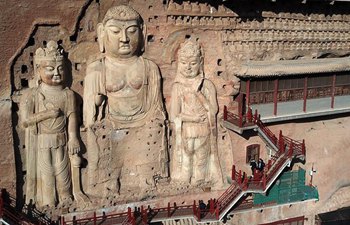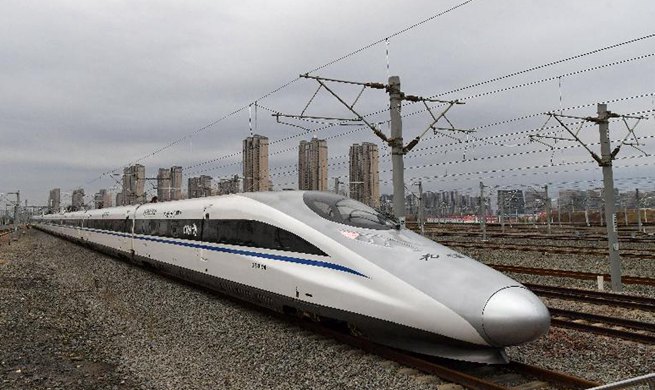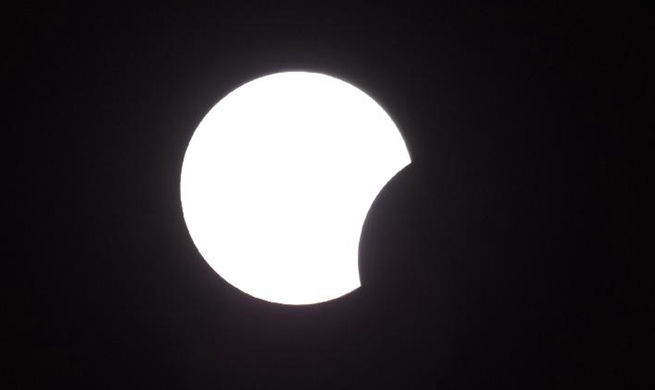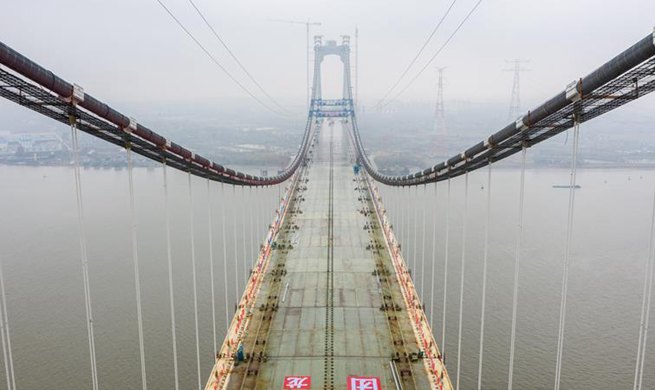TOKYO, Dec. 26 (Xinhua) -- A nuclear power plant was taken offline in western Japan on Thursday ahead of the removal of plutonium-uranium mixed oxide fuel rods, the plant's operator Shikoku Electric Power Co. said.
According to the utility, 37 spent fuel rods will be removed from the Ikata plant's No. 3 unit in January.
The removal of the spent fuel rods at the plant located in western Japan's Ehime Prefecture will also involve the removal of 16 plutonium-uranium mixed oxide (MOX) spent fuel rods, which will be a first in Japan.
Shikoku Electric said as well as replacing the control unit of the No. 3 unit's reactor, it will also add five new MOX fuel rods ahead of the planned restart of the reactor and commercial operation which are set to begin again towards the end of April next year.
The removed MOX fuel rods will be stored in a cooling pool at the plant, the utility said, although with no facility to reprocess the fuel, the utility has yet to explain where the final location of the used fuel will be.
The Japan Atomic Energy Commission (JAEC), meanwhile, under pressure from the international community, had been looking to a process called plutonium-thermal (pluthermal) power generation as a means of reducing Japan's stockpiles of plutonium.
Japan is the only country without nuclear weapons that is allowed to reprocess spent nuclear fuel and has enough plutonium to theoretically make about 6,000 plutonium-cored atomic bombs.
Pluthermal power generation, however, sees MOX fuel burned at fast-breeder or normal nuclear reactors.
However, following the 2011 Fukushima nuclear disaster, the worst such crisis since Chernobyl in 1986, the majority of Japan's nuclear reactors were taken offline for safety inspections amid widespread public opposition over the safety of the aged plants.
Following Japan's nuclear watchdog imposing tighter safety requirements on the plants in the wake of the Fukushima disaster, some utilities have been slowly rebooting their reactors after implementing extensive safety upgrades and passing tougher safety inspections.
But following a lull in Japan actively trying to reduce its stockpiles, the government announced in 2018 a concrete goal of decreasing the total volume of plutonium, which is stockpiled both in Japan and overseas, from the current 47 tons.
The stockpiles, under the government's plan, must be reduced before a reprocessing facility in Rokkasho, Aomori Prefecture, goes online in 2021 to extract plutonium.
The JAEC in 2018 issued new plutonium guidelines to try to reduce the nation's stockpiles, with restrictions placed on the Rokkasho facility so that it can only produce the amount of plutonium required for MOX fuel needed for Japan's nuclear plants.
In March this year, Kansai Electric Power Co. (KEPCO) said it will transport 32 MOX fuel assemblies from France to Japan in 2020 at the earliest, in a bid to reduce its stockpiles held overseas.
According to Kansai Electric, it will use the MOX fuel in the No. 3 and the No. 4 reactors of its Takahama plant in Fukui Prefecture.
By doing so, the level of plutonium overseas will be reduced by one ton from around 11, Kansai Electric said.
The MOX fuel that Kansai Electric plans to ship to Japan, was originally produced in France using plutonium extracted from spent nuclear fuel generated in Japanese nuclear power plants.
Amid such plans, however, JAEC's time-frame for lowering Japan's plutonium stockpiles by pluthermal power generation, still remains uncertain.

